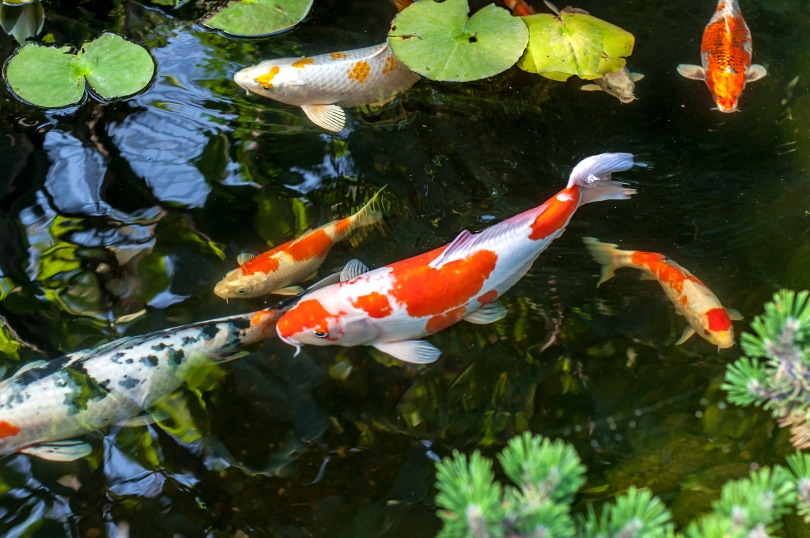

Koi fish obviously need to stay inside the water to survive. So, it can be quite confusing when they seem to insist on jumping out of the water, which often leads to their death unless we can get them back in quickly. While it may look like the fish are jumping out of a completely fine pond, there is typically something wrong with the water to prompt a Koi fish to jump.
Figuring out the problem can be hit-and-miss. You’ll probably need to try a few different solutions before one works, at which point, you’ll know the reason that your fish were jumping. Sometimes, testing the water can reveal hidden issues, though you can’t directly test for every possible problem.
In this article, we give you several reasons that your fish may be jumping out of the pond and provide appropriate solutions. It can be hard to tell what the issue is by simply looking at the pond. For this reason, you’ll probably need to run tests and try a few solutions before the situation is resolved.

Reasons That Koi Fish Jump Out of Water
While koi fish can jump, they will typically remain in the water unless something is wrong. Of course, if they are pushed up by a different fish, they may do a small jump. If they are jumping significantly enough to land outside the pond, though, something is wrong. There are several reasons that this may happen.
1. Poor Water Quality
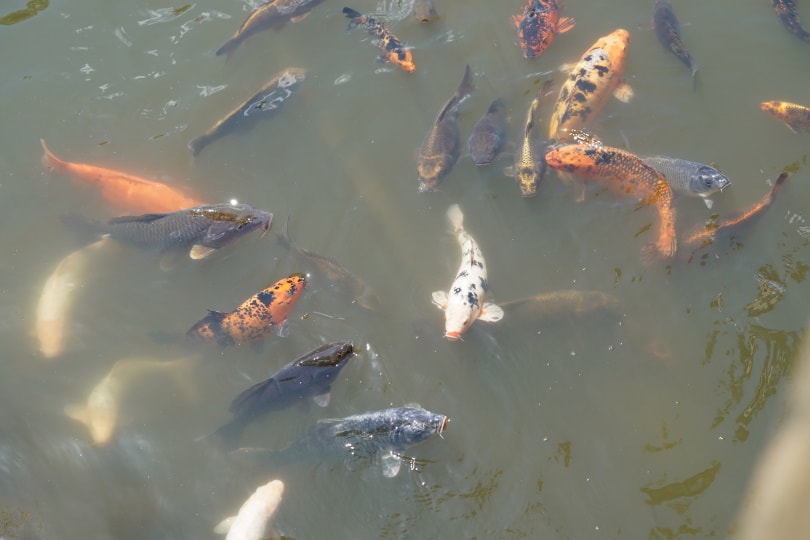
If your water quality is poor, the fish may attempt to jump out. Often, this is because the water is blatantly painful, so they may attempt to escape it. In the wild, this may work in the fish’s favor if they can jump into a different water area. If the fish become stuck in a puddle, which is often the reason that the water quality is bad, they may be able to jump back into the main part of the river.
However, in captivity, that just isn’t how things work.
If the water contains toxins or is out of balance, then the fish may resort to their original instincts and attempt to leave. This is probably one of the most common reasons that koi jump out of their water.
2. Lack of Oxygen
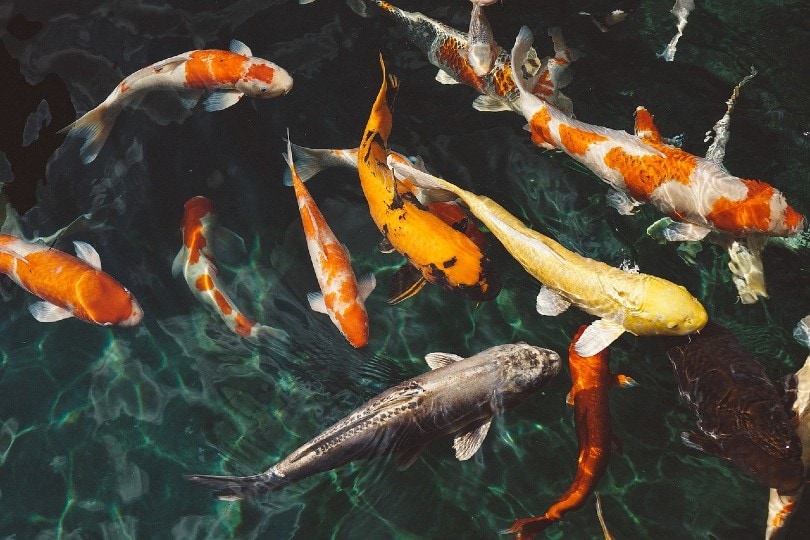
Koi fish need oxygen in the water to survive. If your water is not oxygenated properly, they will likely be unable to breathe. They may attempt to find oxygen elsewhere by jumping. In the wild, this may help them. During a drought, fish can become stuck in small pools, which may not have enough oxygen. By jumping, they can enter the main body of the river again, where currents will increase the circulation of the river.
When the pool is lacking oxygen, fish will typically congregate toward the surface of the water. You may see them gasping for air near the top, which is a sure sign that they are in need of oxygen. Because all the fish are crowded in one area, they may push each other out, which may make it look like they have jumped out of the pond on purpose.
The pond doesn’t necessarily need to be low in oxygen overall. Instead, it may simply be that there is simply not enough circulation, which can lead to low oxygen levels in certain areas of the pond. Therefore, when fish spend time in those areas, they may start to lack oxygen and congregate at the top. The fish won’t know to just go to a different area of the pond.
3. Aggression
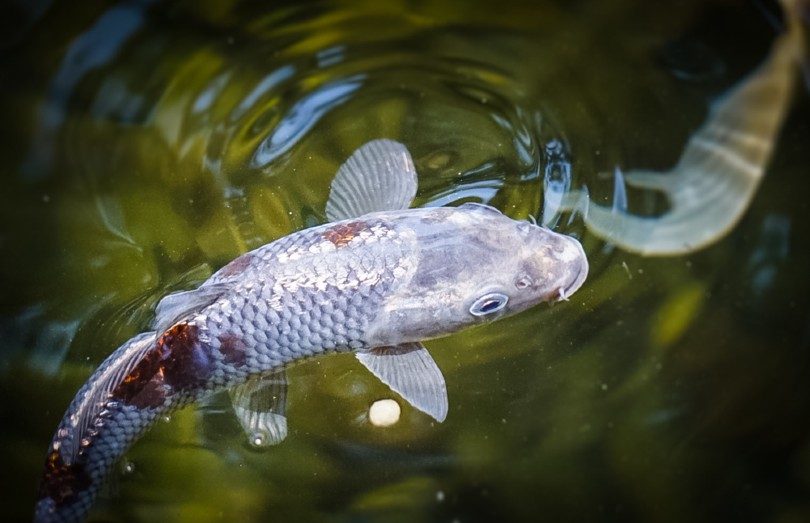
Fish may jump to escape aggression. If your choice is between jumping out of the pond (and potentially landing in another pool) or getting eaten, you’ll probably choose the first one. Koi fish typically aren’t aggressive. However, they may dart energetically around when they are breeding.
While being chased, the fish may jump out of the water and end up outside of the pond.
4. Exploring
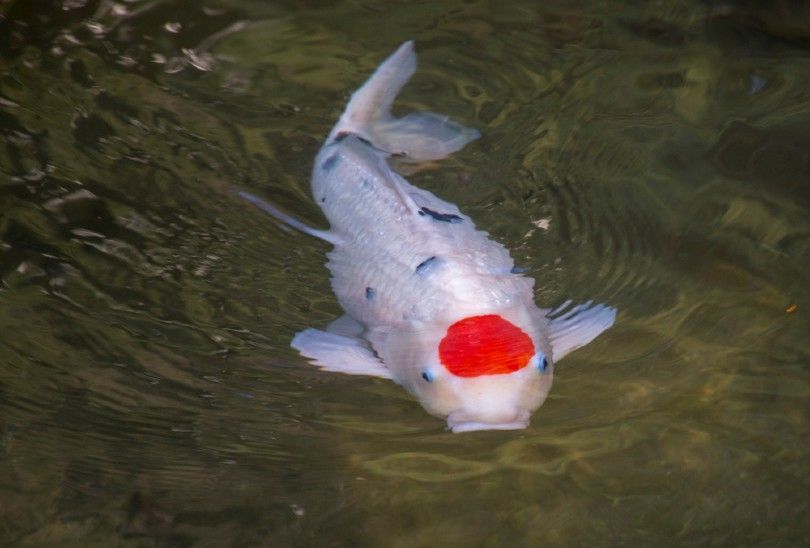
Koi fish are curious fish and may jump out of the water simply to get a better look at something. Some fish are more prone to this than others. If the fish has jumped out of the water and been rewarded, then they may continue to do it or do it more often.
However, this doesn’t always work out so well for the fish. It isn’t uncommon for them to accidentally not land back in the water, as they usually aren’t accurate with their jumps.
5. Conditioning
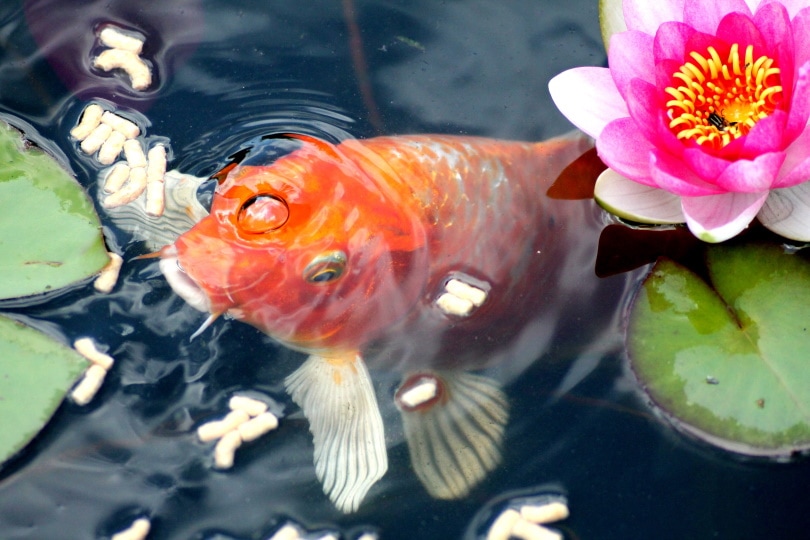
When a fish jumps out of the water, it isn’t odd for them to be “rewarded” with food. After all, many owners are quite impressed when a Koi fish leaves the water. This relatively normal behavior can be mistaken for affection. This is especially true if you do handfeeding, as the fish may begin to associate people and jumping with food.
Therefore, when the fish see someone nearby, they may start to jump in an attempt to get food. In this case, you may have trained your fish to jump out of the water. Luckily, they often won’t do this when people aren’t around, so the risk of them actually getting harmed from the jump is low. If they land outside of the water, you may be able to simply put them back in.
6. Predation
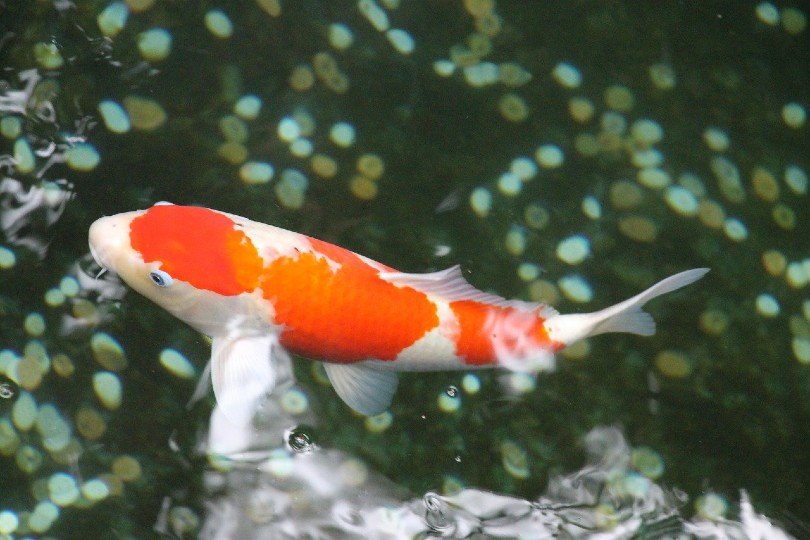
Some fish may jump in an attempt to escape predators, including those outside the pond. For instance, cats, raccoons, birds, otters, and even coyotes may attempt to snag a snack from a Koi pond. Often, these attacks happen at night, so you may not even know of the problem unless you have a camera set up.
Predation can obviously cause a large variety of problems. It can stress out the fish, as well as directly lead to their deaths. Even if fish aren’t eaten, they can become injured, which makes them more prone to bacterial infections.

How to Make Koi Fish Stop Jumping
There is no way to completely eliminate jumping in koi fish. It is a normal behavior and will occur from time to time no matter what you do. However, you can reduce it substantially by fixing whatever problem your fish may be having.
1. Fix the Water Quality
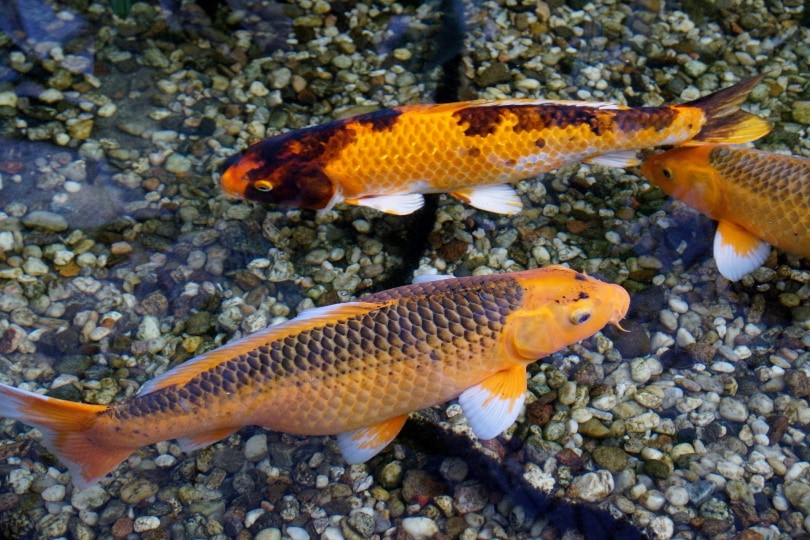
Water quality is an extremely common problem and the leading cause of death for Koi fish. When you have a pond full of fish, it is your job to keep the water in a suitable condition. Otherwise, the fish can become damaged and injured. Fish produce ammonia as a waste product. However, they cannot live in ammonia. If there is too much ammonia in the water, it will burn the fish’s gills and can cause permanent damage.
The best way to remove ammonia is through filtration and beneficial bacteria. Ammonia gets transformed into nitrites, which then get formed into nitrates. The key is to set up your pond with the correct number of bacteria so this cycle is possible. Otherwise, the ammonia can build up, and the fish can become injured. You should cycle your pond before adding any fish.
An incorrect pH can also contribute to the death of the fish. The perfect range is between 7.0 and 7.5. However, they can typically survive in a range of 6.8 to 8.2. There will be natural daily swings in pH, but it should stay within these ranges, and the swings should be small. Sudden changes can also harm the fish.
If the pH is out of this range, the Koi fish will become suspectable to bacteria infections. You should regularly check the pH of your pond and potentially adjust it if necessary. You can do this with small levels of chemicals.
2. Eliminate Unnecessary Bacteria
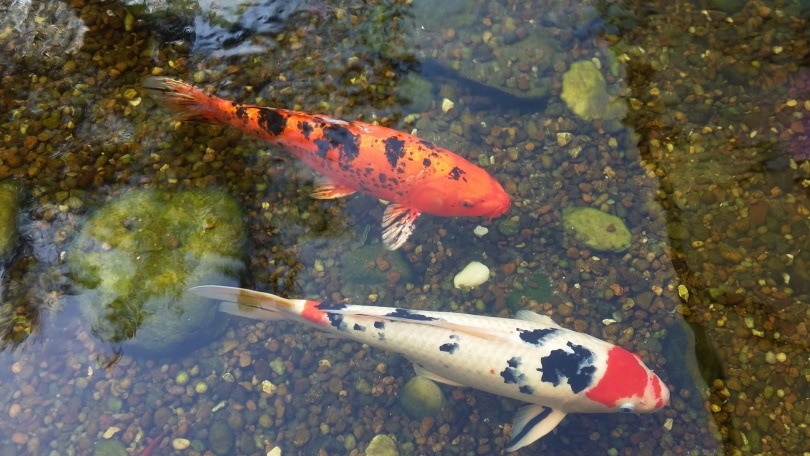
While some bacteria are essential to keeping your water quality normal, other bacteria can make your fish sick. This can cause jumping behaviors or the jumping behavior to become worse. Typically, bacteria are caused by poor water quality. In water that is well taken care of, excess harmful bacteria usually won’t be present.
Furthermore, stress from poor water conditions can make the fish more vulnerable to infections, which can cause all sorts of problems.
If you’re still having trouble with poor water quality and high levels of bacteria, you may want to invest in a better filtration system. A UV sterilizer can be useful as well, especially if you have reoccurrences of disease in your pond.
3. Reduce Overcrowding
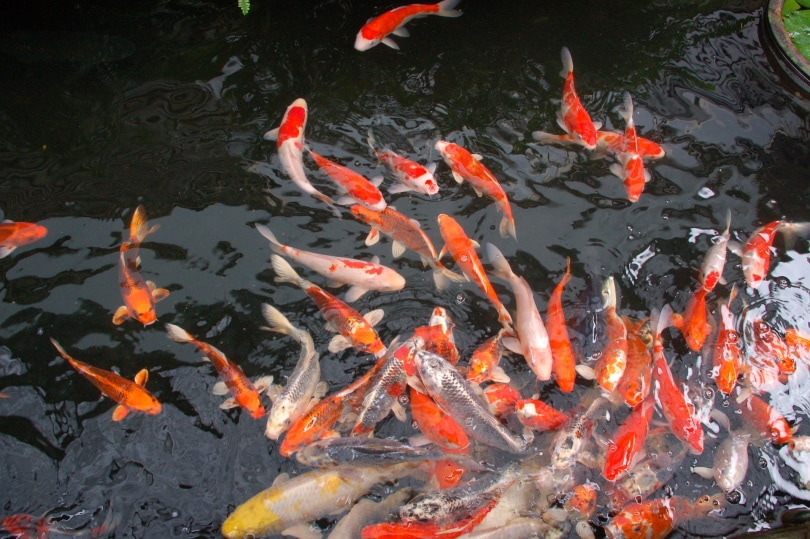
Many problems are caused by overcrowding. If you have too many fish in a pond, the waste may build up, and the oxygen may deplete. The fish may become more aggressive, which will also cause jumping behaviors. The stress can lead to disease, which may cause even more jumping.
Basically, overcrowding is a serious cause of jumping because it can indirectly contribute to just about every reason that fish will jump.
You shouldn’t purchase 30 fish when you can only reasonably keep 10. Remember, these fish do breed. The more fish you start with, the faster you’ll have an overcrowding problem. You should preferably start out with far fewer fish than you can take care of. The fewer fish you have, the less they have to compete over resources and the happier they will be. If you want your fish to thrive, you cannot keep the maximum number of fish in your pond.
4. Make the Sides Taller

If your fish seem to be accidentally jumping out, you may want to raise the sides of the pond. This can prevent the fish from landing outside of the pond when they are making small jumps, as they will no longer be jumping high enough to get out. Furthermore, it can also prevent predators from getting to the fish. If a cat’s arm isn’t long enough to reach into the pond, your fish will be safe.
This may or may not be practical, depending on your setup.
5. Add Netting
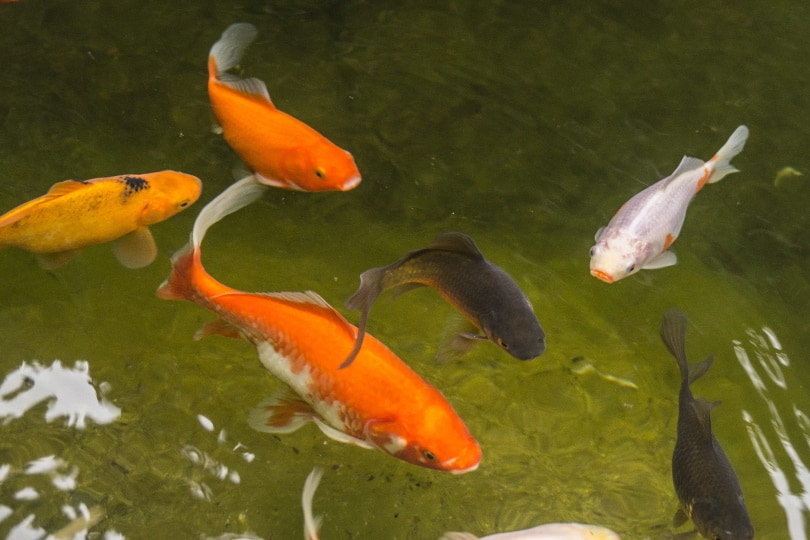
It may not be the most aesthetically pleasing option, but adding netting over the top of your pond is an easy way to keep your fish from jumping out. If you’re dealing with an underlying problem and want to keep your fish in the pond until it is fixed, netting is the way to go.
This can also prevent predators from eating your fish. In this case, you may only need to add the net at night. Most predators are not active during the day, which is when you’ll be looking at your pond, anyway.
6. Increase Oxygen
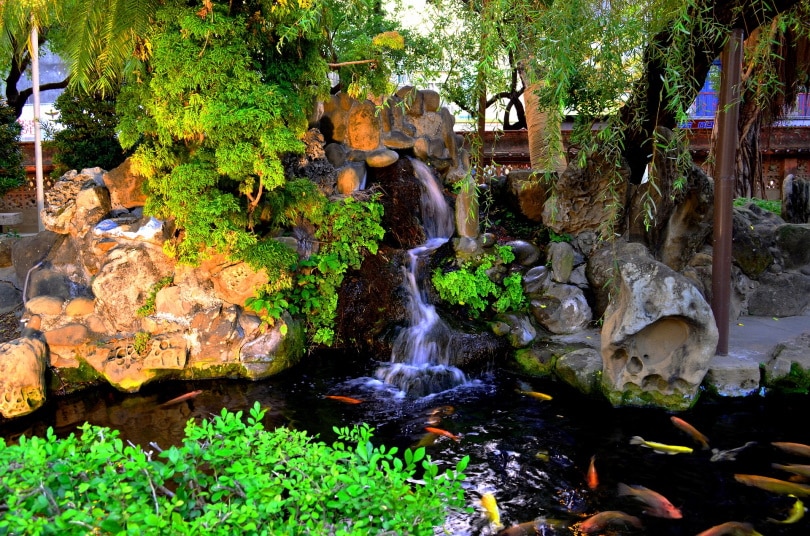
A lack of oxygen is a common reason that Koi fish jump out of their pond. Increasing the oxygen level is often a simple process, though you may have to try multiple solutions to raise it sufficiently.
Dissolved oxygen is lower the warmer that the water gets. Therefore, ponds will often lose substantial amounts of oxygen in the summer. Algae can also reduce oxygen levels. It is also more common in the summer, which can lead to even lower oxygen during the warmer months of the year. The oxygen level in any pond should remain above 3 ppm and below 10 ppm. You can measure the oxygen in your pond with the correct test kit, which should let you know for sure if this is the problem.
If the oxygen in your pond is low, you should increase the water movement. This will allow more water to circulate at the top of the pond, which will increase the amount of oxygen absorbed by the atmosphere. It will also prevent fish from crowding near the top of the pond, as the bottom of the pond should have sufficient oxygen. Usually, you can use a water fountain or waterfall to achieve this.
Another simple way to increase the amount of oxygen is to use an air pump. This increases the movement of the water in the pond, which further increases the amount of oxygen. You can also add oxygen stones, which work the same way as a pump but on a larger scale. They supply air bubbles to the water, which mixes it up and adds extra circulation.

Conclusion
Seeing your Koi fish jump out of the water can be distressing. After all, if they stay out of the water, it is a death sentence! Usually, jumping behaviors are caused by poor water conditions or a lack of oxygen, which can both be remedied easily. There are other potential problems as well, such as predators threatening the fish and aggression among the fish themselves.
We recommend first testing your water to determine if there is a problem. Most likely, you’ll find that the water is too high in a toxin, such as ammonia, or too low in oxygen. Then, you can fix the problem from there.
Featured Image Credit: Vital Safo, Shutterstock
Nicole is the proud mom of Baby, a Burmese cat and Rosa, a New Zealand Huntaway. A Canadian expat, Nicole now lives on a lush forest property with her Kiwi husband in New Zealand. She has a strong love for all animals of all shapes and sizes (and particularly loves a good interspecies friendship) and wants to share her animal knowledge and other experts’ knowledge with pet lovers across the globe.





